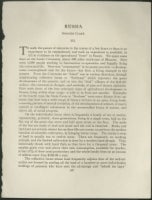Dana Porter Library, first floor
University of Waterloo Library
Waterloo, Ontario N2L 3G1
519-888-4567 x42619 or x42445
Part III, January 1932
SPENCER CLARK
III.
TO walk the gamut of centuries in the course of a few hours cr days is an experience to be remembered ; and such an experience is available, in all its vividness on the agricultural "front" in Russia. We spent some days at the Lenin Commune, about 500 miles south-east of Moscow. Here were 1,600 people working in harmonious co-operation and happily living the communal life. Here was "communism" in its purest practice—a development contemplated only for the future—but here, a living example in the present. From the Commune we "hiked" out in various directions through neighbouring collective farms or "Kolhozes" which represent the great development of the present; and on into the "deaf" villages of the individ-ualists—the remnants in thought, and methods, of past and distant centuries. Here were three, of the four principal types of agricultural development in Russia, lying within close range—a mile or so from one another. Examples of the fourth type the State Farm or "Sovhoze" were more distant from our scene; but here was a wide range of history written in an open, living book, a moving picture of mental evolution, of the developments of science, of man's control or intelligent submission to the uncontrolled forces of nature, and above all, of social progress.
On the individualist farms there is frequently a family of ten or twelve, representing, probably, three generations, living in a single room, half on the flat top of the great clay stove and half upon straw on the floor. The walls of the hut are made of mud and straw and the roof is thatched. Books and furniture are entirely absent but an ikon fills one corner, to perform the modern function of scientific cultivation, in bringing better crops. The family's strip of land is usually ten to twelve acres. There are frequently no working animals, and the limited cultivation is done by a wooden hand plough. They laboriously thrash with hand flails as they have for a thousand years. The surplus grain over and above their own consumption, available for market, is but 11% of their total production ; and the whole family lives on an income of seldom more than $100.00 a year.
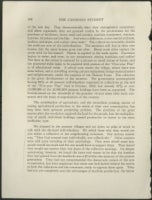 The collective farms whose land frequently adjoins that of the individualists are formed by pooling all the land of a hundred or more individualist holdings of peasants who have seen the advantage and "beheld the light"of the new day. They democratically elect their management committee; and when organized, they are granted credits by the government for the purchase of fertilizers, better seed and modern machine equipment, tractors, harrows, thrashers and the like. And what a difference, a new mental attitude, modern technique, and a short time make! The collectives invariably double the yield per acre of the individualists. The members still live in their own houses, but the same houses grow and alter. Metal roofs often replace the straw with its fire hazard. Plaster is applied to the walls inside. Furniture begins to enter, and even, to our amazement, sewing machines and radios! The ikon in the corner is replaced by a picture or small statue of Lenin, and the plastered walls begin to be papered with posters of the "Five-year Plan" or of educational value. A school soon enters the village, where there was none before, and a travelling moving picture equipment brings entertainment and enlightenment, under the auspices of the Theatre Trust. The collective is the great development of the moment. The government contemplated having 22% of all peasant individualists organized in collectives at the end of the "Five-year Plan" that is October, 1933; but already 57% or over 14,000,000 of the 25,000,000 peasant holdings have been so organized. The Soviets stand on the threshold of the greatest victory since their early conquests and the basic re-organization of the country.
The collective farms whose land frequently adjoins that of the individualists are formed by pooling all the land of a hundred or more individualist holdings of peasants who have seen the advantage and "beheld the light"of the new day. They democratically elect their management committee; and when organized, they are granted credits by the government for the purchase of fertilizers, better seed and modern machine equipment, tractors, harrows, thrashers and the like. And what a difference, a new mental attitude, modern technique, and a short time make! The collectives invariably double the yield per acre of the individualists. The members still live in their own houses, but the same houses grow and alter. Metal roofs often replace the straw with its fire hazard. Plaster is applied to the walls inside. Furniture begins to enter, and even, to our amazement, sewing machines and radios! The ikon in the corner is replaced by a picture or small statue of Lenin, and the plastered walls begin to be papered with posters of the "Five-year Plan" or of educational value. A school soon enters the village, where there was none before, and a travelling moving picture equipment brings entertainment and enlightenment, under the auspices of the Theatre Trust. The collective is the great development of the moment. The government contemplated having 22% of all peasant individualists organized in collectives at the end of the "Five-year Plan" that is October, 1933; but already 57% or over 14,000,000 of the 25,000,000 peasant holdings have been so organized. The Soviets stand on the threshold of the greatest victory since their early conquests and the basic re-organization of the country.
The socialization of agriculture, and the immediate pressing matter of raising agricultural production to the needs of their own consumption, has long been their greatest perplexing problem. The abolition of the great estates after the revolution regained the land for the people, but the multiplication of small, individual holdings caused production to revert to the most inefficient type.
We stopped in the peasant villages and sat down on piles of straw to talk with the die-hard individualists. We asked them why they would not join either a collective or the neighbouring commune. One curious answer was, "That God created men individually, not collectively." Other answers were still more revealing of their psychology. They were afraid some lazy people would not work and the rest would have to support them. They feared they would not receive their fair share of the collective earnings. On deeper questioning, however, we found the more real reason to be that the freedom they had gained from the landlords was still within the memory of the present generation. They had not comprehended the democratic nature of the new co-operation, but were suspicious that some new lord lurked behind the scenes in both the collectives and the commune, ready to oppress them again. They had not yet completely seen the advantages of machine production, the better crops, the higher standard of living, and the greater, actual freedom attained by their neighbours. But the light is rapidly dawning.
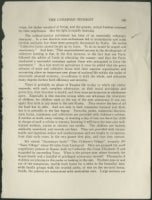 The collectivization movement has been of an essentially voluntary character. In a few districts over-enthusiasm led to intimidation and some forcible methods; but these were promptly denounced by Stalin. He writes "Collective farms cannot be set up by force. To do so would be stupid and reactionary." And later, "This unprecedented success in the development of collective farming is due, in the first instance, to the fact that our Party followed the advice of Lenin in educating the masses—and that the Party conducted a successful campaign against those who attempted to force the movement." As a last word on agriculture it must be added that the great advance of state and collective farms with their superior organization and accounting place an important new phase of national life within the realm of accurately planned economy, co-ordinates it with the whole, and advances many degrees further both efficiency and security.
The collectivization movement has been of an essentially voluntary character. In a few districts over-enthusiasm led to intimidation and some forcible methods; but these were promptly denounced by Stalin. He writes "Collective farms cannot be set up by force. To do so would be stupid and reactionary." And later, "This unprecedented success in the development of collective farming is due, in the first instance, to the fact that our Party followed the advice of Lenin in educating the masses—and that the Party conducted a successful campaign against those who attempted to force the movement." As a last word on agriculture it must be added that the great advance of state and collective farms with their superior organization and accounting place an important new phase of national life within the realm of accurately planned economy, co-ordinates it with the whole, and advances many degrees further both efficiency and security.
There is probably no phase of Russian life to-day to which the visitor responds, with such complete admiration, as their social provisions and protection, their devotion to health, and their mass participation in wholesome sport. Especially is this reaction strong when one witnesses the treatment of children, for children rank at the top of the new aristocracy if one can apply that term in any sense to the new Russia. They receive the best of all the land has to offer. And not only is their treatment humane and kind, but it is scientific to the last degree. Factories, parks, residential districts, state farms, communes and collectives are provided with children's creches. A mother at work, away visiting, or wanting a day of rest can leave her child in charge of such a creche or nursery, knowing it will have the best care well-trained workers, nurses or doctors can render. The children are bathed, medically examined, and records are kept. They are provided with innumerable and ingenious indoor and outdoor games, and are taught to co-operate, from their early years, in the very games they play, and toys they operate.
We visited "Dyetskoye Syelo" "The Children's Village", formerly the "Tsars Village" about 30 miles from Leningrad. Here are grouped the most magnificent palaces in Russia, built by Catherine the Great, Elizabeth II and expanded by succeeding Tsars. What is the picture now, where formerly the Royal family and a handful of privileged aristocracy moved? Thousands of children are playing in the parks or basking in the sun. Workers pass in and out of the sumptuous, marble bath house for a swim in the beautiful lake, while family groups walk the wooded paths, or rest on the terraced lawns. Inside, the palaces are maintained with meticulous care. Large sections are crops, the higher standard of living, and the greater, actual freedom attained by their neighbours. But the light is rapidly dawning.
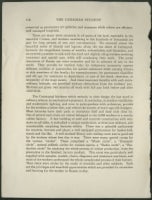 There are many more sanatoria in all parts of the land, especially in the beautiful Crimea, and workers numbering in the hundreds of thousands are sent for long periods of rest and convalescence. We motored about the beautiful series of islands and lagoons along the sea shore of Leningrad, formerly the magnificent homes of wealthy industrialists and financiers and we entered a number to talk with the tired and slightly ailing workers receiving treatment and special care while still continuing their work. The social insurances of Russia are more extensive and far in advance of any in the world. They provide for medical help; for temporary incapacity against sickness, accident or quarantine; for special assistance while nursing infants or sick members of the family; for unemployment; for permanent disability and old age; for assistance to dependants, in case of the death, desertion, or incapacity of the wage earner. And these insurance benefits with such extraordinary latitude, are provided without deductions from the workers' pay. Mothers are given two months off work with full pay both before and after child-birth.
There are many more sanatoria in all parts of the land, especially in the beautiful Crimea, and workers numbering in the hundreds of thousands are sent for long periods of rest and convalescence. We motored about the beautiful series of islands and lagoons along the sea shore of Leningrad, formerly the magnificent homes of wealthy industrialists and financiers and we entered a number to talk with the tired and slightly ailing workers receiving treatment and special care while still continuing their work. The social insurances of Russia are more extensive and far in advance of any in the world. They provide for medical help; for temporary incapacity against sickness, accident or quarantine; for special assistance while nursing infants or sick members of the family; for unemployment; for permanent disability and old age; for assistance to dependants, in case of the death, desertion, or incapacity of the wage earner. And these insurance benefits with such extraordinary latitude, are provided without deductions from the workers' pay. Mothers are given two months off work with full pay both before and after child-birth.
The Communal kitchens which embody in their design the last word in culinary science, in mechanical equipment in sanitation in modern ventilation and modernistic lighting, and even to palm-gardens with orchestras, provide for the workers a better diet, and relieve the women of much age-old drudgery. Most factories have their park or recreation field and their club close by. One of several such clubs we visited belonged to the 4,000 workers in a nearby rubber factory. A fine building of steel and concrete construction with windows on all sides, it embodied a unique modernistic architecture without, and innumerable, surprising features within. There was a splendid auditorium for concerts, lectures and plays; a well equipped gymnasium for basket-ball, tennis and the like. A well stocked library and reading room was in good use by the workers whose free day it was. There were many special rooms for the various "circles". These comprised a "Music circle", a "Dramatic circle", several athletic circles for various sports a "Radio circle", a "Production circle" for studying the whole process of rubber production, from the plantation to the finished, factory product. This room was particularly well supplied with samples, models, charts, diagrams and miniature machines, and most of the workers understand the whole complicated process of their factory.
Then there were circles for the study of scientific and other subjects. Such
are the privileges and manifold opportunities which are provided for recreation and learning for the worker in Russia to-day.
The "Park o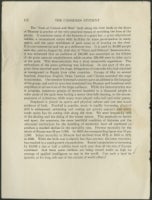 f Culture and Rest" built along the river bank at the doors of Moscow is another of the very practical means of enriching the lives of the people. It combines many of the features of a great fair, a great educational exhibit, a recreational centre with facilities for mass participation in many sports, and the quiet restfulness of park areas or of boating on the river. It is non-commercial and run at a deliberate loss. It is used by 60,000 people each day, and on August 1st, their day of "Peace and Defence" demonstration, it was estimated that an audience of 100,000 was assembled on the hillside of the great open-air amphitheatre, while another 200,000 were in other parts of the park. This demonstration was a most memorable experience. The enthusiasm of the great gathering was infectious. At one part of the program there marched upon the stage, delegations of comrades who had returned or immigrated to Russia from other countries. Groups of fifty to several hundred, American, English, Swiss, German, and Chinese ascended the stage in succession. One member from each country gave an address in the language of his group, and each in turn was translated into Russian and broadcast with amplifiers to all sections of the large audience. While the demonstration was in progress, numerous groups of several hundred to a thousand people in other parts of the park were having a merry time folk dancing, to the accompaniment of orchestras; while many more played volly-ball and other games.
f Culture and Rest" built along the river bank at the doors of Moscow is another of the very practical means of enriching the lives of the people. It combines many of the features of a great fair, a great educational exhibit, a recreational centre with facilities for mass participation in many sports, and the quiet restfulness of park areas or of boating on the river. It is non-commercial and run at a deliberate loss. It is used by 60,000 people each day, and on August 1st, their day of "Peace and Defence" demonstration, it was estimated that an audience of 100,000 was assembled on the hillside of the great open-air amphitheatre, while another 200,000 were in other parts of the park. This demonstration was a most memorable experience. The enthusiasm of the great gathering was infectious. At one part of the program there marched upon the stage, delegations of comrades who had returned or immigrated to Russia from other countries. Groups of fifty to several hundred, American, English, Swiss, German, and Chinese ascended the stage in succession. One member from each country gave an address in the language of his group, and each in turn was translated into Russian and broadcast with amplifiers to all sections of the large audience. While the demonstration was in progress, numerous groups of several hundred to a thousand people in other parts of the park were having a merry time folk dancing, to the accompaniment of orchestras; while many more played volly-ball and other games.
Emphasis is placed on sports and physical culture and one sees much evidence of both. Football is popular, tennis is rapidly increasing, physical drill is widespread, swimming and rowing are greatly enjoyed, and every trade union has its rowing club along the river. We were frequently told of the skating and the skiing of the winter season. This emphasis on health and sport, the sanatoria, the more healthful condition of factories and the advanced institutions for the handling of maternity have all combined to produce a marked decline in the mortality rate. Pre-war mortality for the whole of Russia was 28 per 1,000. In 1930 the corresponding figure was 18 per 1,000. Infant mortality in Moscow had declined from 27% in 1913 to 12% in 1928. While the birth rate is slightly less than pre-war, the lower mortality has resulted in a rapid growth of population. Russia's population is increasing by 10,000 a day or half a million more each year than all the rest of Europe combined. And these same children are being reared under as high an average of applied intelligence as any in the world. Can such a land be ignored, or for long, left out of the current of world affairs?
